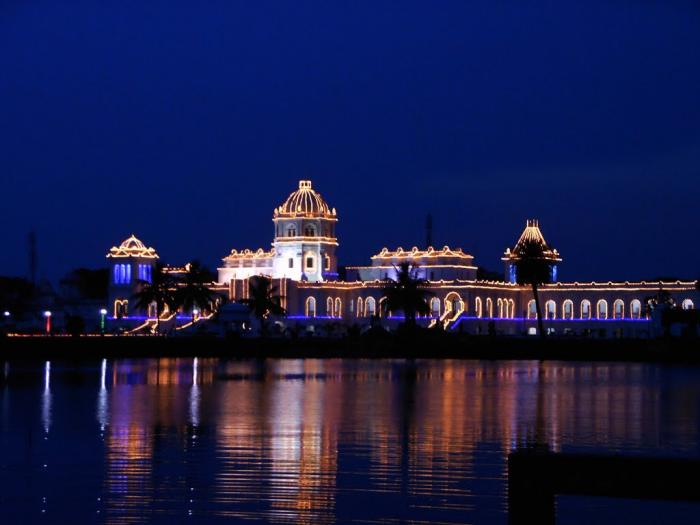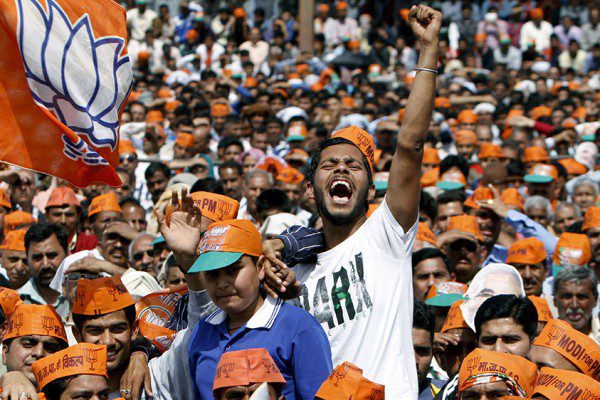“In the aftermath of the Dipa Karmakar phenomenon, one would like to hope that Tripura as one of the ‘seven sisters’ has started to carve a niche and expand the limited contours of the imaginative landscape nurtured by most in mainland India.”

This is not the space to dwell on the unfathomable apathy of our nation until the eleventh hour towards the Dipa Karmakars by when they have already proved themselves with their backbreaking toil and dedication. “The Making of Dipa Karmakar” remains a mystery until then.
The Internet searches on the young gymnast yielded yet another piece of information: Dipa Karmakar is from Agartala, the capital of Tripura, which is the third smallest state in the country. In the aftermath of the Dipa Karmakar phenomenon, one would like to hope that Tripura as one of the ‘seven sisters’ has started to carve a niche and expand the limited contours of the imaginative landscape nurtured by most in mainland India.
Tripura, as a state, shares its borders with Bangladesh, Mizoram and Assam. 84 percent of its border is an international boundary with Bangladesh (around 856 km) with around 53 km with Assam and a 109 km long border with Mizoram. Tripura is geographically connected with the rest of the country only through one highway, the National Highway 44, which meanders through the hills to the border of Karimganj district in southern Assam and then continues through the states of Meghalaya, Assam, North Bengal and to Kolkata.
To most, Tripura would foster rusty recollections of a communist government, nostalgia for a Sachin Dev Burman and by extension, perhaps, a reference to the ‘royal family’ of Tripura.
Given the fragility of public memory, it may not be out of place to rekindle aspects of the unique socio-political, cultural and linguistic history of Tripura itself. While Bangla is the language spoken by the majority Bengali community in Tripura, Kokborok, Mogh, Halam, Chakma and Sabrum are the languages spoken by Indigenous communities, who form 30 percent of the state’s population. As of 2012, Tripura also had four speakers of the endangered Indigenous language, Saimar. In fact, the state is home to almost three-dozen languages. In 2012, Sukurthang Saimar was felicitated by the Central Institute of Indian Languages as the oldest speaker of the Saimar language.[1]
Tripura is also noteworthy in its contribution towards one of the first and major museums in the region dedicated to the North East of India. The beautiful Ujjayanta Palace in Agartala had been built around 1899 – 1901 by the then king of Tripura, Maharaja Radha Kishore Manikya. While Rabindranath gave the palace its name, Sir Alexander Martin of Martin Burn Company designed it. The palace reflects Roman, British and Mughal architecture and is two storied with three large domes, the largest being the central one at 86 feet, which rests above a four storied central tower. It was the home of the royal family until Tripura’s accession to India in October 1949. The Tripura Government bought the Palace from the royal family in 1972-73 and it housed the state legislative assembly until 2011. In 2013, it became home of the Tripura State Museum, the biggest in the region established in 1970. Further, the museum was provided with seismic retrofitting to prevent damage from earthquakes and was officially made open for the public. In the same year, the government had proposed to rename the renovated palace. However, in a unique display of agency, around 8000 people held a candle-lit rally in the heart of the town of Agartala to protest against the renaming. The titular head of the royal family, Pradyot Kishore Debbarma said, “Ujjayanta Palace is a historical place. It doesn’t belong to the members of erstwhile royal family nor does it belong solely to the government – so somebody in the government can’t suddenly decide to change its name one fine morning.”[2] Consequently, the Palace retained its name and history found itself ensconced in royal quarters. As the largest in the region, the museum showcases the diversity of the North-East through a display of weaves, textiles, ornaments, instruments, paintings, sculptures from not only Tripura but different parts of the North East.Museums and Indigenous communities have always had a troubled and conflicting history.
The collection of ‘cultural artifacts’ is often interpreted as the projection of Indigenous communities as consisting of remote and dying people, rather than thriving, dynamic traditions open to both rupture and renovation.
According to Karl Hutterer, “The act of collecting ethnographic specimens must be seen as an act of taking possession, both physically and symbolically, of some of the essence of individuals as well as whole societies and cultures. For the Third World, this aspect of private and museclogical collecting is just another element of the larger colonial context.”[3] In response to such justified criticisms, Indigenous museums across the world have increased their commitment to the changing Indigenous representations and relationships in museums. For instance, the Museum of Civilisations in Canada has been designed by Douglas Cardinal, an architect of Metis Blackfoot/ Kainai origin who asserted that “By designing organic curves and opposing right angles, I want to provide expression for a non-mainstream worldview and value system, one that emphasizes the sacred elements in life and nature.”[4] In this context, Ujjayanta Palace located in the North East itself and focusing on the traditions of the region has played a crucial leadership role in foregrounding the richness of the northeastern cultures and thereby ensuring their wider recognition. Sima Datta Deb, faculty member, Women’s College, Agartala feels, “The museum offers a crucial bird’s eye view of Indigenous traditions from the North East, not merely as an archaic remnant of the past but as a living heterogeneous tradition. Further, the palace itself effectively puts the history of the state on the map of the world.”
The unique museum in Tripura testifies to the continued and active Indigenous presence in the North East and repositions Indigenous creativity within museum programmes and in public awareness. The museum attempts to recognise and provide appropriate treatment of culturally sensitive materials and compels us to rethink on issues of public accessibility, intellectual and cultural property rights.
One would like to imagine that the euphoria surrounding Dipa Karmakar would be sustained in far-reaching initiatives for both the sport that she represents, and for the state that she belongs to as well. Therefore, it is time to tell the tale of Ujjayanta Palace and its treasures once again.
References
[1] http://epe.lac-bac.gc.ca/100/205/301/ic/cdc/cardinal/accessible2/index.html Accessed 22 August, 2016
[2] http://timesofindia.indiatimes.com/city/guwahati/Tripura-museum-to-retain-name-of-Ujjayanta-Palace/articleshow/22964765.cms Accessed 22 August, 2016
[3] Hutterer, Karl. L. “The Sharing of Anthropological Collections: Cooperation With Third World Museums”, 10.1525/mua.1980.4.5.5, 7.
[4] http://timesofindia.indiatimes.com/city/mysuru/Saimars-oldest-speaker-appeals-to-protect-his-language/articleshow/15020139.cms Accessed 22 August, 2016














